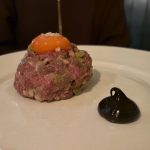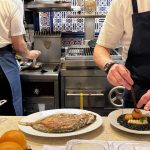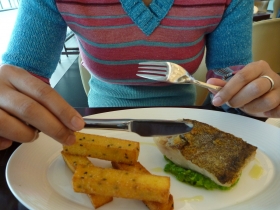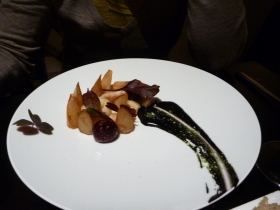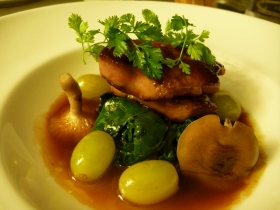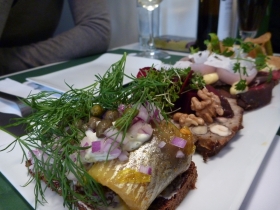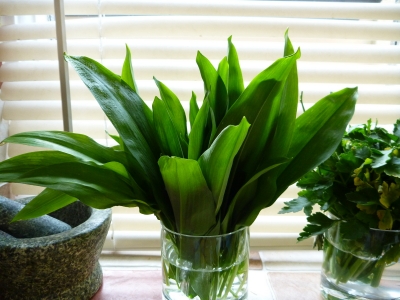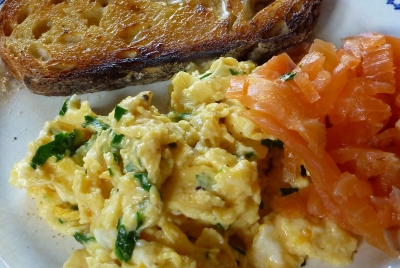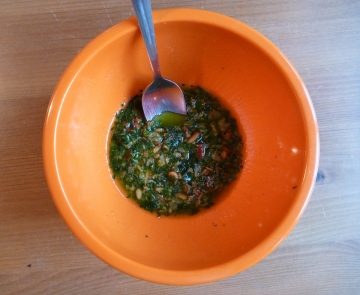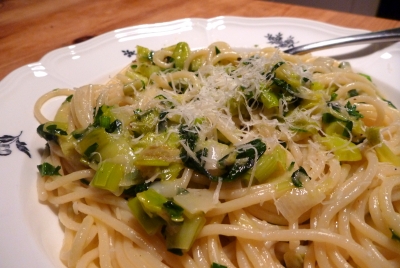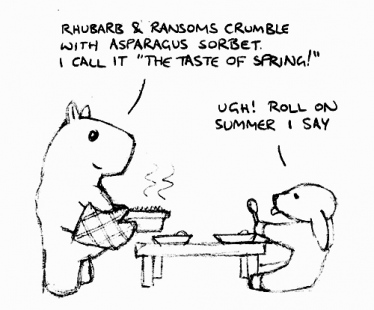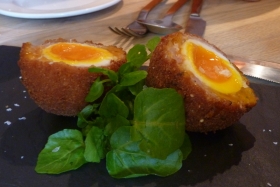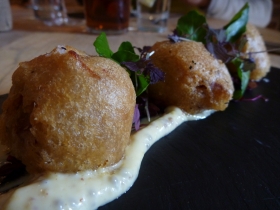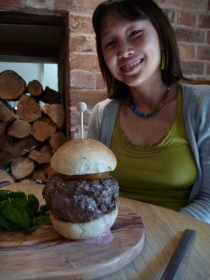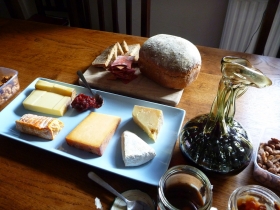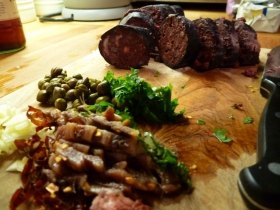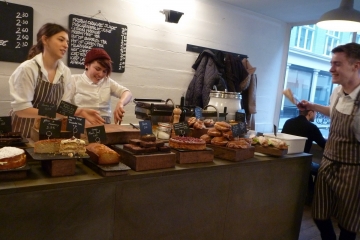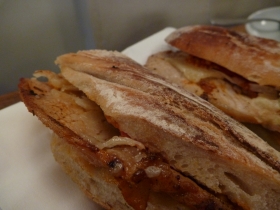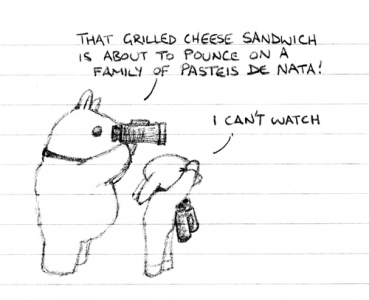Strange customs in exotic places: charging £1.80 for tap water! If the food at Fiskebaren hadn’t been fantastic we could never have forgiven them. The waitress who explained the charge didn’t blush, so I assumed it wasn’t unusual in Denmark and resisted the urge to snark. Reading around later, it certainly sounds like a common charge. Those crazy Danes, they’ll want money for napkin
hire next. How about wear-and-tear on cutlery?We started our culinary odyssey back at Heathrow, where with an hour to kill and hungry for lunch we decided to try Gordo’s airport diner. Actually, it was pretty good and not over-priced given the captive audience; £12 for a couple of nice smoked salmon fishcakes with a blob of spicy mayo, a couple of quid more for a big chunk of cod with neat polenta “chips” and punchy aubergine salsa. The cod tasted a bit old. The staff were oddly reserved and seemed to have been brought in wholesale from a small Turkish village, and the cutlery was the tiniest I’ve ever been given to eat a meal with. On balance though, it’s one Gordon Ramsay establishment I might well go back to.
First meal in Denmark: a trendy spot called Fiskebaren, set incongruously in a working district of shipping
factors and meat packers. Distressed industrial interior, dramatically lit, comfy. This was seriously wow seafood. Raw razor clams with a herb cream on a crisp of sweet malted bread. Unctuous tuna tartar with frisky leaves. Big chunk of fried cod roe with pickled root veg, sparky vinaigrette and sticks of sweet herby waffle. Gorgeous cod tongue with perfect slow-roast salsify and jet black herb hollandaise. I would eat here every week.Next evening: dinner on white linen at Broholm castle. Just a main course, mine being two slabs of perfectly pan-fried foie gras served with a splendid cognac sauce, delicious pickled mushrooms of a delicate woodland variety I didn’t recognise and some juicy green grapes to cut the richness. Maureen’s lamb was pretty good but
couldn’t compete. A night and a full four-course banquet here would be a wonderfully baronial treat, though they aren’t really embracing the new Nordic cuisine.Third evening: well made sushi at a sharp little spot called Karma, startlingly empty on a Thursday evening given the quality of the rolls and snacks. Great tempura oysters, nommy spiced crispy salmon skin. I should explain that our lunch today was at Noma, so we were only filling up the gaps in the evening.
And on the fourth day we enjoyed a luncheon of smorrebrod at Aamann’s. We had very traditional smorrebrod in the little town of Faaborg a couple of days ago, so it was good to be able to contrast that with a more contemporary and thoughtfully sourced take on the classic Danish
open sandwich. Aamann’s does them veeeery well. I particularly loved the steak tartar, but their take on the more traditional pork pate gave me a better comparison; the quality of the pork and the care in the making was evident in taste, texture and overall deliciousness. If I worked in Copenhagen I would have lunch here every day.Conclusions? Well, it’s immediately remarkable that we didn’t have one disappointing meal in Denmark. There might be some luck involved, but that’s over three lunches and three dinners. So there are a lot of good things to eat in Denmark even without considering the “world’s best restaurant” Noma. But in case you are considering it, that’ll be the next post…
Oh, and if you’re interested in the rest of my short break in Denmark (or indeed my year of travelling around-the-world) then check out Otter Adrift.



